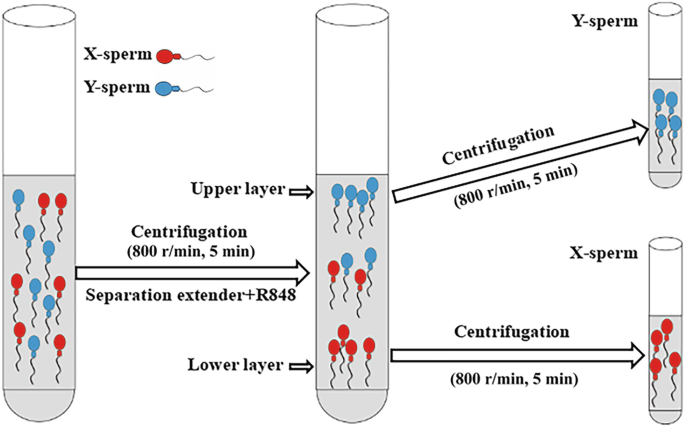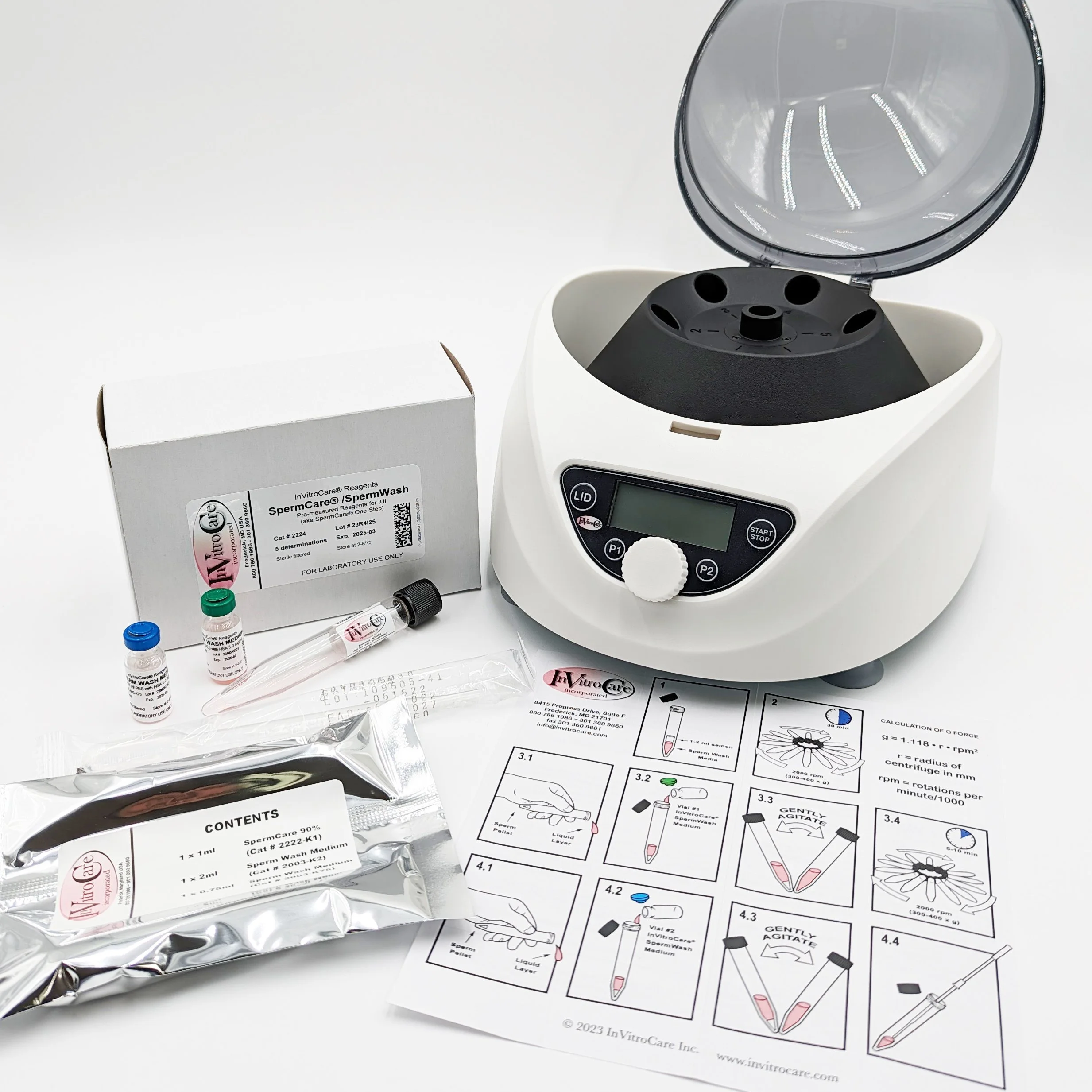
Heifer-sexed semen is a fairly new, specialized reproductive technology that allows breeders to increase the likelihood of producing female calves. First developed in the late 90's, this technique is particularly advantageous for cattle operations focused on expanding their herd with heifers. Producing more heifers then bulls in the Highland World is particularity beneficial, as females consistently sell for significantly more then males.
.
How it Works: The process of sexing semen involves sorting sperm cells based on their genetic material. The devise that this is done with is called a centrifuge. The idea is sperm carrying an X chromosome, which results in female offspring, have a different molecular weight from sperm those carrying a Y chromosome, which leads to male offspring. The centrifuge "spins" the sample at a high velocity, which sorts the "male" and "female" sperm cells. This sorting process typically achieves a success rate of approximately 98% in producing female calves, making it a valuable tool for cattle breeders.


Picture Source:
.
Cost Analysis and Why it's a Helpful Tool: Utilizing heifer-sexed semen can significantly impact herd management strategies. For instance, by increasing the number of heifers born, breeders can enhance their breeding programs, ensuring a steady supply of genetically superior females. This is particularly important in breeds like Highland cattle, where genetic diversity and quality are paramount for maintaining herd health and productivity.
Moreover, the use of heifer-sexed semen can lead to economic benefits. Female calves generally have a higher market value than males. Yes, Heifer-Sexed Semen generally costs more, but by investing in heifer-sexed semen, breeders can potentially increase their profitability while also improving the overall quality of their herds.
.


Pictured above are two calves sired by WL Genesis. The Silver (bull) sold for $8,250. While this is still "above average" for young bull prices in the current market, Genesis' heifers consistently sell closer to the $10,000 range. The dun heifer above sold for $13,000. In this case, the extra cost of using heifer-sexed semen MORE then paid for itself.
.
Is there a difference in conception rates using heifer-sexed semen vs. conventional semen? The short answer is no. However, In the past some studies have shown a small drop in conception rates while using heifer-sexed semen, but this technology is advancing at such a rapid rate, (along with specific bull and breeding program factors) this "gap" is pretty much closed. With that said, It is important to note that the success of heifer-sexed semen (AND Conventional Semen) is influenced by various factors, including the timing of insemination, the health of the female, and the quality of the semen used. Along with your mineral and nutrition program being optimized. Therefore, it is advisable for breeders to work closely with reproductive & nutritional specialists to optimize their breeding programs and achieve the best possible outcomes. Here at Highland Genetics we have not seen a difference in conception rates between heifer-sexed and conventional semen. (but our bulls tested well and our nutrition/mineral program is good :)
.
In conclusion, heifer-sexed semen represents a significant advancement in cattle breeding technology. By enabling breeders to selectively produce female calves, this method not only enhances herd management but also contributes to the economic viability of cattle operations. As the demand for high-quality breeding stock continues to grow, the adoption of heifer-sexed semen is likely to become increasingly prevalent in the industry.
